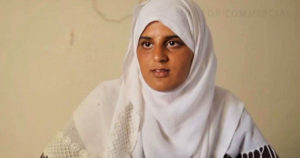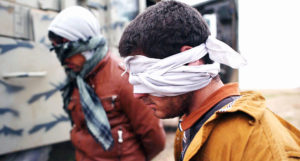There is something horribly seductive about the spectacle of extreme violence: it’s disgusting, gut-wrenching, appalling. It’s also impossibly compelling in its extremity and strangeness: just look at it.
Anyone who builds a career out of watching such material, whether it’s for the purposes of documenting it, reporting on it, or inquiring into its wider causes and meanings, ought to have some thoughts on the moral ambiguities intrinsic to it. In his memoir, Unreasonable Behaviour, first published in 1990, the British war photographer Don McCullin explains how he was drawn to war by a sense of adventure and the belief that by documenting its horrors he could stir the conscience of those who could put an end to them.
But he soon came to doubt that conviction and to question the true nature of his motives: “If war had become so hateful to me, why did I not keep away?” Reflecting on his long and celebrated career, he can’t repress the nagging suspicion that war photographers are nothing more than glorified profiteers, coldly trading on other people’s unspeakable suffering and grief. “Yet, I ask myself, what has all my looking and probing done for these people, or for anyone?… What have I done with my life?”
Reading Unreasonable Behaviour today is a jarring experience, not just because of its raw honesty, but also because of the contrast it invites between McCullin’s temperament and his peers who now cover war and conflict. McCullin is ambivalent, self-reproachful, measured and stoic, whereas his successors tend to be self-righteous, ideological and fragile. When McCullin was asked about Covid, at the height of the pandemic, the then-84-year old contemptuously snorted: “I couldn’t give a sod about it.”
There are certainly no Don McCullins in the extremism profession today, where stupefying levels of self-aggrandisement are matched only by a stupefying absence of any self-awareness. Consider Vidhya Ramalingam, founder and CEO of a counter-extremism company called Moonshot. Referring to the Eradicate Hate Global Summit held in Pittsburgh last month, Ramalingam insisted that its purpose was “to stop an epidemic of violence that has cost us so many lives… We are the group that are going to stop this”.
The self-promotion and self-regard on display here is really quite breathtaking. So, too, is the sense of unreality. How, you might ask, does Team Ramalingam plan to go about the task of stopping America’s epidemic of violence? By speaking at plush conferences about “novel forms of safeguarding”? By supporting workshops on the intersection between gaming and extremism? By posting insufferably smug tweets about men “taking responsibility” for male-dominated power structures?
Of course, all of this raises a bigger question: what is the point of the extremism profession? Ramalingam would say its overriding purpose is to make the world a better place; that it’s only by properly understanding how extremism works that we can identify effective solutions for combating it. Yet if you take even a cursory glance at the extremism profession it becomes glaringly obvious that the driving imperative behind it is not to eradicate extremism, but to hunt down, if not outright invent, new forms of it in order to drum up business from all the internet-scraping, report-writing, and digital counter-messaging that the industry trades on.
This explains why so many industry-insiders have embraced the concepts of hate speech and the related notion of “online harms”, and it’s why some extremism experts have heartily endorsed the notion that violent extremism has become “mainstream” in American culture and society. They have done so not necessarily because they are committed to radical activism, although some certainly are, but because the alarmist, progressive vision of a society saturated in mutual hatred affords so many opportunities for the extremism profession to engorge itself on.
The result is a curious, if mutually beneficial and lucrative, alignment, where the concerns of Left-leaning activists are leveraged and repackaged for profit by hard-nosed extremism hucksters who are now suddenly awakened to the lethal menace of Tucker Carlson, Jordan Peterson and Andrew Tate. At the same time, the radical activists have embraced the language of violent extremism — “mass radicalisation”, extremist “eco-systems”, dangerousness, vulnerability — to impugn their political enemies on the Right and to legitimise their social banishment through censorship.
Another curious aspect of this alignment is how readily so many extremism experts and scholars have embraced the infantilising trauma discourse of radical activists. This is a subject I address in my new book on the seductions and repulsions of violent online spectacles. If you spend all your time watching this stuff, out of choice, as many extremism experts do, you will inevitably run up against the suspicion that you might secretly enjoy it or have been irreparably desensitised by it.
Nobody in the extremism profession would ever dare confess to harbouring such feelings — and if they were to voice them they would be ostracised as a degenerate voyeur or sociopath. Instead, many claim to have been traumatised by what they have seen. And while I have no doubt that some have been psychologically or spiritually damaged by over-exposure, the invocation of trauma serves to deflect or neutralise any deeper inquiry into the murky business of tracking extremist material on the internet and the complex motives and emotions that it involves.
War, as many illustrious war correspondents have testified, can be a warping experience. In his memoir about covering the war in Bosnia in the early Nineties, Anthony Loyd remarked that although war didn’t fundamentally change his already black-pilled perspective on the world, it did serve to reinforce his “views about the pointlessness of existence, the basic brutality of human life and the godlessness of the universe”. For Christopher Hedges, the feeling was far more visceral and dramatic. Recalling a ruck he’d gotten into with an airline clerk on the way back from a particularly harrowing trip to El Salvador, where he’d been covering the war there between 1983 and 1988, he wrote: “Blood streamed down his face and mine. I refused to wipe the dried stains off my cheeks on the flight to Madrid, and I carry a scar on my face from where he thrust his pen into my cheek. War’s sickness had become mine.”
Similarly revealing is an anecdote told by Rukmini Callimachi, the New York Times journalist who made her name reporting on Isis, in which she describes hearing someone repeatedly banging on her apartment door late at night. She called the cops, fearing it might be an Isis operative paying her a menacing visit. (It was actually someone from the local water company.) Callimachi tells the story with humour, but the moral behind it is a serious one: to be exposed to carnage and chaos, all of the time and without let up, can seriously derange one’s perception, judgment and sense of proportion.
The best reporters are acutely aware of this danger and try, as best they can, to inoculate against it. Loyd, by his own admission, failed miserably on that front. Not only did the war in Bosnia wrench open the lid on the darker side of his mind; it also blew a gaping hole in his sense of professional detachment and made him contemptuous of the “complacency of Western societies”.
This hints at a greater paradox that extremism professionals would do well to consider: that through over-exposure to the very worst places of the internet, they succumb to the very radicalisation dynamics that they’re trying to expose and hinder. When mainstream journalists think that MAGA is an armed insurgency or declare that, as one headline put it in Foreign Policy, “White Supremacists Want a Dirty Bomb”, or believe that a red dress or “ok” sign is a fascist dog-whistle, it becomes impossible to deny that some kind of warping has occurred. By staring too intently into the twilight world of online megadeath, mayhem and tribal hatred, they inevitably project this gruesome and fringe demiworld onto the real world that the rest of us inhabit. As the terrorism scholar Peter Neumann has observed:
“If people end up spending too much of their time in virtual communities, the online forums come to function like one of Edwin Sutherland’s “criminogenic environments”, in which deviant and extreme behaviours are learned and absorbed and in which extreme ideas come to seem normal because of constant interaction with people who hold similar—and similarly extreme—views… As a result, people acquire a skewed sense of reality…”
The irony, which seems lost on the extremism reporters and experts, is that this dynamic applies as much to them as to the extremists they spend all of their time “infiltrating”. Don McCullin knew all about the dangers of getting too close to his subject and, along with other like-minded war reporters, he has much to teach us about the ambiguities of their profession and their own conflicted relationship to it. The new generation of hate eradicators and extremism experts would no doubt benefit from reading them — although such are the exigencies of saving the world that they probably don’t have the time.
Disclaimer
Some of the posts we share are controversial and we do not necessarily agree with them in the whole extend. Sometimes we agree with the content or part of it but we do not agree with the narration or language. Nevertheless we find them somehow interesting, valuable and/or informative or we share them, because we strongly believe in freedom of speech, free press and journalism. We strongly encourage you to have a critical approach to all the content, do your own research and analysis to build your own opinion.
We would be glad to have your feedback.
Source: UnHerd Read the original article here: https://unherd.com/




